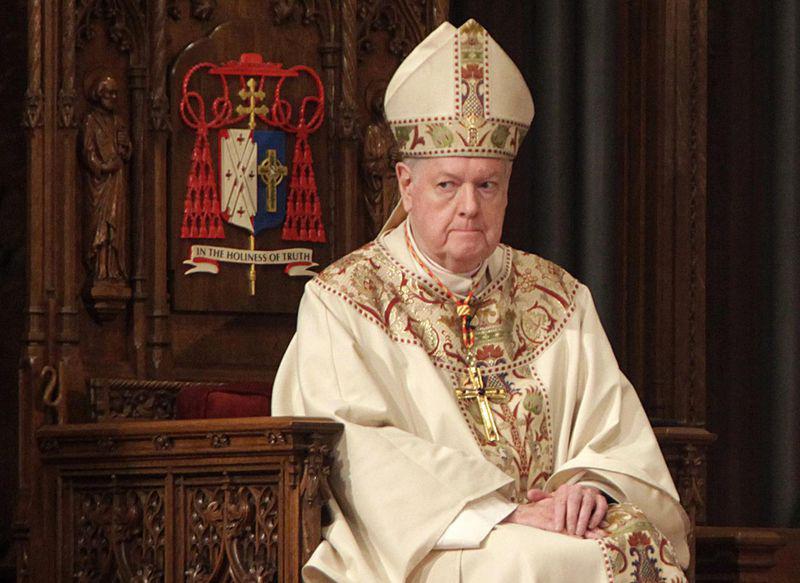|
Editorial: We need to stop calling the pattern of sex abuse in the Catholic Church a travesty. It was a criminal conspiracy and the state hasn’t done enough to hold the guilty accountable.
Hartford Courant
The latest revelations about sexual abuse aren’t new but they are nonetheless shocking: Edward Egan, during his tenure as bishop of the Bridgeport diocese of the Roman Catholic Church, methodically covered up allegations that priests in the diocese had sexually abused children. The man who would become a cardinal in New York aided and abetted the depravity of priests who found sexual pleasure in fondling innocent children. We use a lot of melodramatic words to describe the actions of men who by virtue of the collars they wore were able to get away with child abuse: scandal, travesty, nightmare. But there’s one word we don’t use enough: crime. The revelations about Egan and his role in covering up abuse were first reported in 2002 by The Courant, which obtained thousands of pages of secret court documents that implicated the bishop in hiding more than a dozen cases. The report by former state Superior Court Judge Robert Holzberg issued last week now shows the stunning extent of the abuse in the diocese: 71 abusive priests and 281 victims identified from 1953 through 2007. In the 15 years since papers like The Courant and The Boston Globe spoke aloud the stories that had long been whispered, lawsuits have been filed and settled and a number of priests have been prosecuted. . But while the efforts of dioceses such as Bridgeport and Hartford to conduct an accounting of abuse are laudable, the Catholic Church has largely been left alone to police itself and fashion its own solutions to a deeply rooted and pervasive problem. Where was the moral leadership of Connecticut’s political establishment? Where was the joint federal-state task force conducting a full scale criminal investigation? Nowhere. And the half-hearted response continued last week in both the executive and judicial spheres. Gov. Ned Lamont — through a spokesman — said the governor was reviewing the report. Chief State’s Attorney Kevin Kane said he was paying close attention to the findings. “We will ... certainly investigate allegations made by victims,” Kane said, while pointing out that Connecticut does not allow grand juries to hand down indictments. “We don’t have a statute that would permit us to have an ongoing grand jury in the manner Pennsylvania did, and we wouldn’t be inclined to investigate crimes that haven’t been reported by victims or parents of victims.” Imagine if organized crime figures were trolling Catholic churches and whisking away vulnerable children in a human trafficking conspiracy. We wouldn’t be hearing about judicial limits or statutes of limitations or the need to carefully review a report. There’d be blue-ribbon commissions, the full weight of the state and every other tool politicians pull out when they want to deal with something. But the abuse scandal in the church has long been political dynamite. Instead of organized crime figures, we had respected religious leaders — pillars of the community, men like Egan and Walter Curtis, founder of Sacred Heart University. It is time for the state to end its passive response. First, every law enforcement tool available must be used to bring any of the guilty who might still be alive to account. The effort must focus on not only those who abused children but those who facilitated abuse or covered up crimes. Next, the legislature should follow the example of New York and New Jersey and give victims more time to bring civil claims against their abusers. In August, New York state opened a one-year “look back window” that allows any adult victim of child sex abuse to bring a civil case even if the statute of limitations has expired. It also extended the age by which accusers can sue to 55. It’s time for legislators to add the “look back” provision to Connecticut law. Finally, the state must be sure it is providing care to any victim of the church in need of counseling or support, no matter how old they may be. Wounds like these leave deep scars. Victims cannot find justice through a report. They suffered severe trauma, abused by men they should have been able to trust, and those wounds are unlikely to fully heal. The state should give them every opportunity to pursue their claims against their abusers and to — at long last — have their day in court.
|
.
Any original material on these pages is copyright © BishopAccountability.org 2004. Reproduce freely with attribution.
